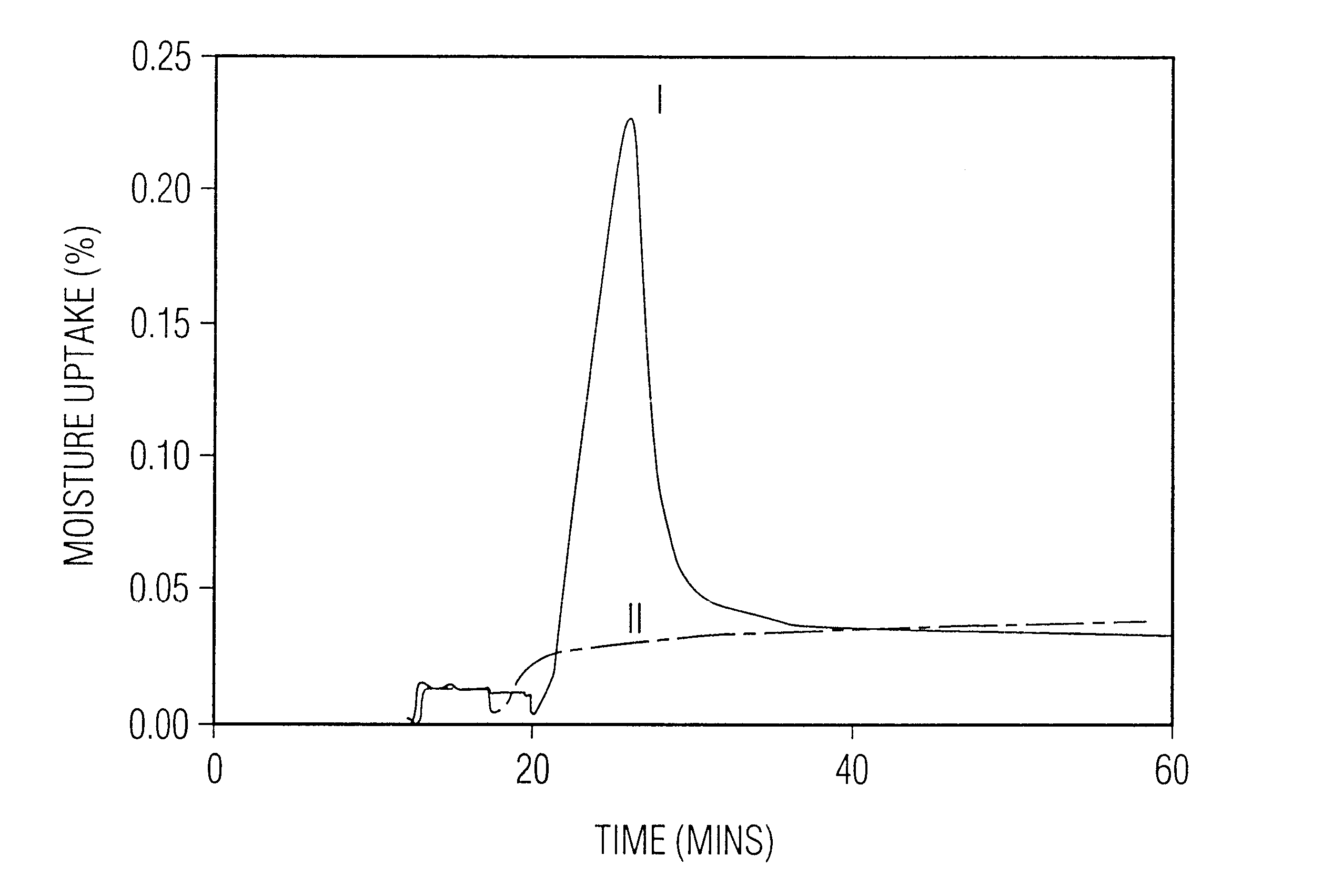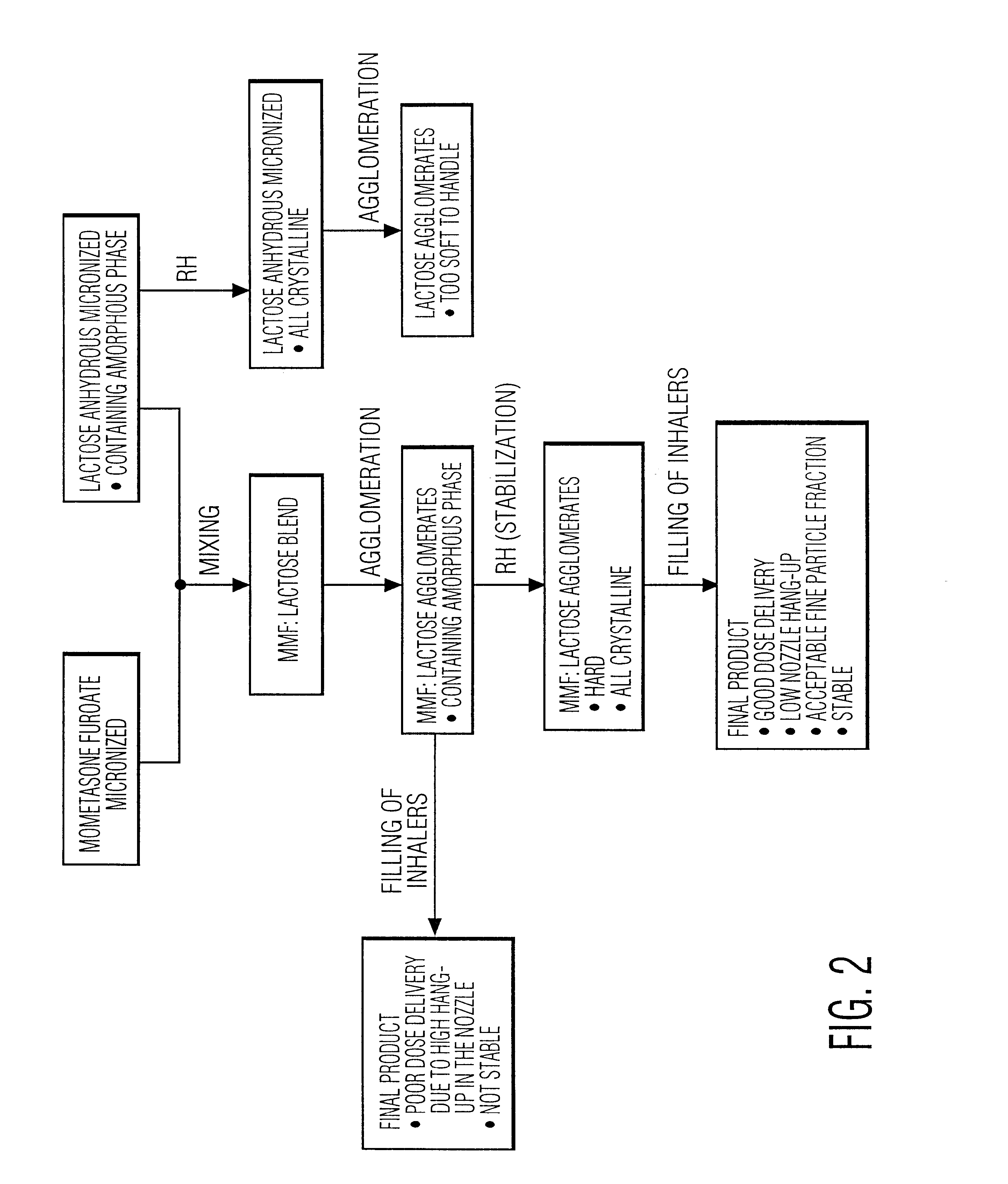However,
inhalation therapy is a particularly demanding dosing
system and it involves its own set of unique design and performance problems.
Amongst those problems is a concern over the accuracy and
repeatability of dosing.
When one squeezes a conventional
squeeze bottle, it is difficult to apply the same amount of force each and every time.
The dangers of over-medicating or under-medicating and the consequences of such unwanted deviation can be profound.
The problem becomes even more complex when the size of the doses are as small as they often are in oral inhalation therapy.
While such devices represent a significant advance in oral inhalation therapy, there are still some circumstances in which problems may remain.
These problems often center on the properties of the pharmacologically
active agent and their interaction with the
inhaler.
For example, certain drugs are not "free-flowing" and that may make it difficult to move the
drug from storage in a reservoir, to measurement in a dosing hole, to delivery from the
inhaler.
Other drugs may suffer from electrostatic charge problems or may exhibit an unacceptable degree of cohesive force.
Such drugs may be "sticky," even when in powdered form.
These drugs may clog the
inhaler / applicator, affecting its ability to properly meter the intended amount of medication.
Drugs may also be "fluffy" which makes handling and loading sufficient
drug into a dosing hole a real challenge.
Related problems may also result based upon the small size of the particles which are generally used in inhalation therapy.
However, powders of this size can be extremely difficult to work with, particularly when small dosages are required.
Such powders are typically not free-flowing and are usually light, dusty or fluffy in character, creating problems during handling,
processing, and storing.
In addition, it can be difficult to repeatedly and accurately load such materials into the dosing hole of an inhaler.
Thus not only the properties of the drug, but also the required size of the therapeutic particulate, can combine to cause considerable problems in terms of handling and dosing.
However, it has been determined that when particularly small doses of medication are required, such as under about 100-200 .mu.g of drug, the inclusion of conventional excipients may not adequately compensate for the problems associated with the use of fine drug particles.
Unfortunately, the use of such large particles can have a significant
impact on the amount of drug delivered from
dose to
dose.
Moreover, the intended benefits of the use of such excipients begins to diminish as the size of the
dose decreases.
Therefore, drug hang up or retention within the metering device or the inhalation
nozzle and other handling issues can become an increasing problem.
Even in dosing systems designed to provide relatively larger doses of pharmacologically
active agent, such as about 400 .mu.g or above, the resulting agglomerates of pure drug can still suffer from integrity problems.
This would prematurely result in the formation of smaller particles which are more difficult to
handle.
In fact, it is the handling difficulties of the fine drug particles that necessitated agglomeration in the first place.
However, this application warns that if the vapor
exposure is conducted after agglomeration, the product is "useless in an inhalation device."
These intermediate agglomerates are too weak to withstand normal handling and thus they are not suitable for a
dosage form.
They also have a relatively
high rate of hang up in the
nozzle of an inhaler.
Such agglomerates are also not stable.
It is these smaller dosing levels which are the most demanding on dosage forms.
Oral inhalation of a pharmacologically
active agent, as previously noted, can be demanding, not only on dosing equipment, but also on formulations.
However, forming agglomerates of inherently free-flowing materials can be difficult.
This new
agglomerate retains none of those properties of the former agglomerates which were useful for agglomerate formation, but detrimental to handling, measuring and administering.
Some degree of amorphous character is unavoidably imparted upon materials when the particle size is reduced using such techniques.
Moreover, it has been found that merely imparting such amorphous content upon particles is not sufficient.
However, because of many drugs' natural stability, they cannot be readily transformed to crystalline agglomerates as discussed herein.
Too much
convertible amorphous content can result in agglomerates which are bound too tightly to yield the desirable fine
particle fraction.
The use of such high pressures results in a particularly violent particle formation environment and generally increases the amount of amorphous content.
Moreover, applicants preferably use dry compressed
nitrogen gas to pulverize the
solid binder, as applicants have discovered that the
exposure of the amorphous content to
humidity during particle formation can act to reconvert the amorphous content back to a crystalline form prematurely.
This would cause the premature conversion of some or all of the amorphous content to a crystalline form which would actually retard agglomerate formation and lead to variability.
This variability could also cause the formation of agglomerates which are too hard and strong.
Even when such agglomerates are administered using an inhaler which provides a particularly violent dispensing action, these agglomerates may not yield an acceptable fine
particle fraction.
Preferably, mixing will result in substantial homogeneity.
Of course, it may not be possible for one to obtain absolute homogeneity.
Blending such ingredients, in fine particle form, may be a challenge in and of itself.
For a particularly small amount of drug as relative to the
solid binder, the conventional blending technique may not result in an acceptably homogeneous mixture.
While the use of water as a binder is well known, it is detrimental to the ability to generate a fine particle fraction, particularly when used in combination with the principal mode of binding described herein; namely crystalline binding.
Significant problems in repeatable dosing would thus be realized.
When the resulting agglomeration protocol did not yield the desired results, the cause was investigated.
The final product was not stable and provided poor
dose delivery due to high hang up in the
nozzle of the inhaler and elsewhere.
In addition, the binder can actually begin to dissolve and this would create bonds which are too strong.
 Login to View More
Login to View More 


